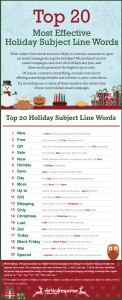One of the most overlooked elements of any business blog is metadata. At its most basic, metadata is information that helps readers find your posts. It may not appear directly in your posts, but it helps your blog get picked up by search engines and shared on social networking sites.
You’re probably already familiar with tagging (and Twitter hashtags), which categorize your posts and make it possible to track trending topics. However, there’s more to metadata than tagging.
Let’s take a look at the basics of metadata for your business blog with some easy tips that you can use today!
Title & Description
The title of each post and page on your blog should be no more than 70 characters long. That’s the magic number when it comes to being displayed on search engine results pages or social media shares. Descriptions, on the other hand, are limited to 150 characters. That may not seem like much, but you should still make the most of the space you’re given.
Blogger Lisa Kasanicky puts it bluntly: “If you don’t take advantage of social metadata, you risk your posts looking crappy when shared on social media.” That’s because platforms like Facebook will grab your featured image, post title, and description to display—and if you haven’t taken the time to optimize those fields, you’ll end up losing search engine and social traffic.
Author Bio
According to SEO Expert Mike King, authors who appear reputable have an advantage when it comes to search engine ranking. “Google is going to rank content that is connected to authors that they deem to be reliable sources over content that is not. A cool visible incentive is that you get name and your pretty picture in the SERPs [search engine results pages] if you’re an author.”
What this means for you is that you should create a brief—as in one or two sentences brief—bio that appears on all of your posts. It’s also a good idea to include a photo of yourself; ideally, the same one that you use for all of your blogging and social media platforms.
Image Metadata
Images don’t just add visual interest to your blog. They’re also a chance to add more metadata! There are several fields you can fill out with information that helps your blog get indexed by search engines—but this time, they’ll be indexed in the image search section of Google and other engines. These fields include:
- Image Title – The name you give to the image. Think “Trafalgar Square London 2015” rather than “img43501.” Be specific!
- Alt Text – This is the text that’s displayed when a visitor hovers over the image with the cursor. It’s also displayed when the image fails to load properly and serves as a brief description for the visually impaired.
- Caption – The caption usually appears below your image (depending on how your blog is set up) and provides additional information and context.
- Description – Unlike the caption, the description does not appear on the post itself but on the attachment page for the image. When a visitor clicks on the image, it takes them to a page where they can see both the image and your description.
Feeling overwhelmed? This post is a great primer on image metadata.
Remember, the metadata you create should be proofread just as closely as any other text on your blog. Titles and descriptions are particularly important since they’ll be highly visible on search engine results pages and social media shares. Double check that you’ve spelled everything correctly and avoided any major grammar goofs!
Do you make the most of metadata on your blog? Share your top tips in the comments!
(186)
Report Post





